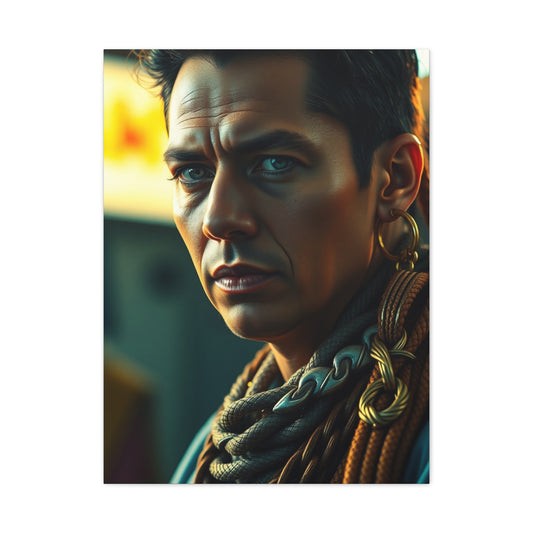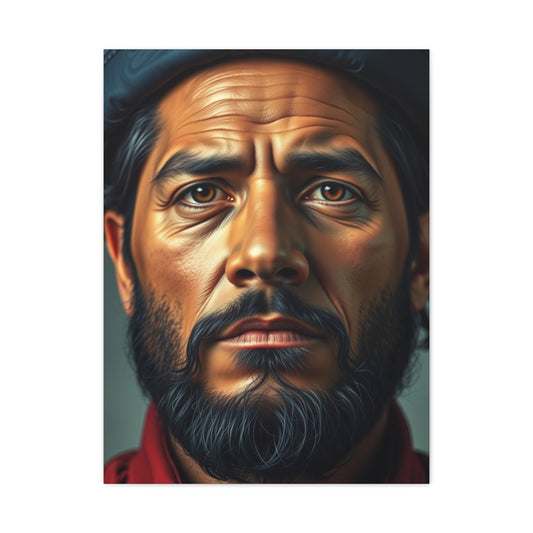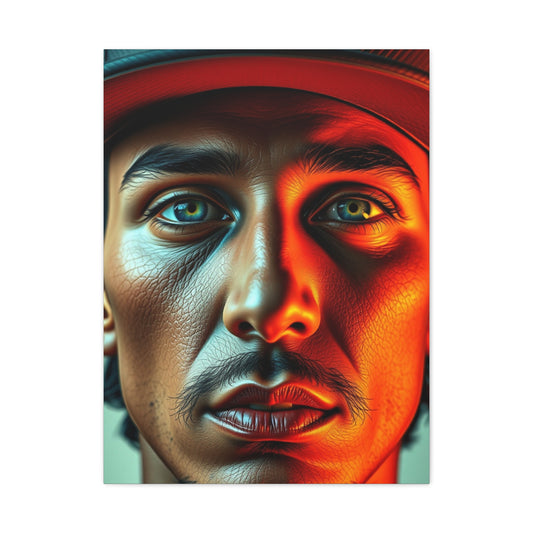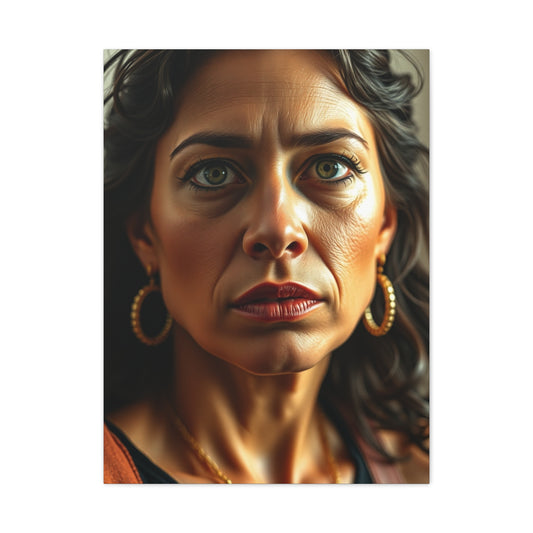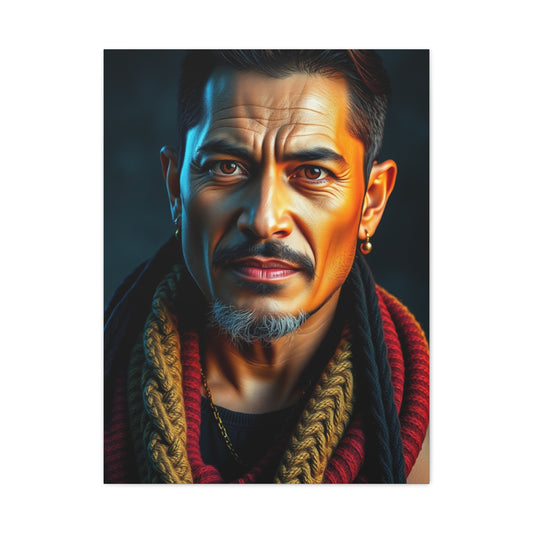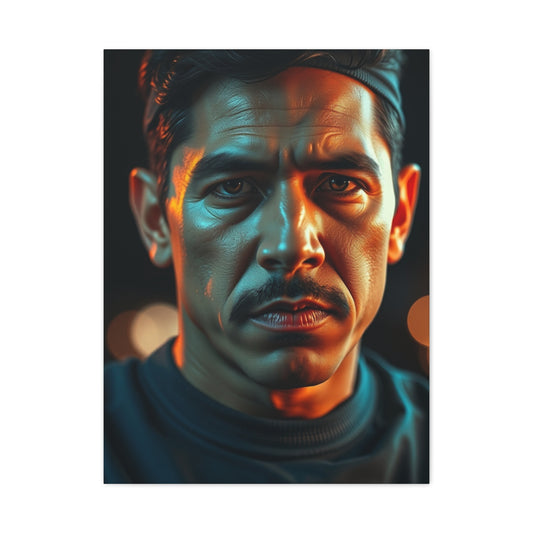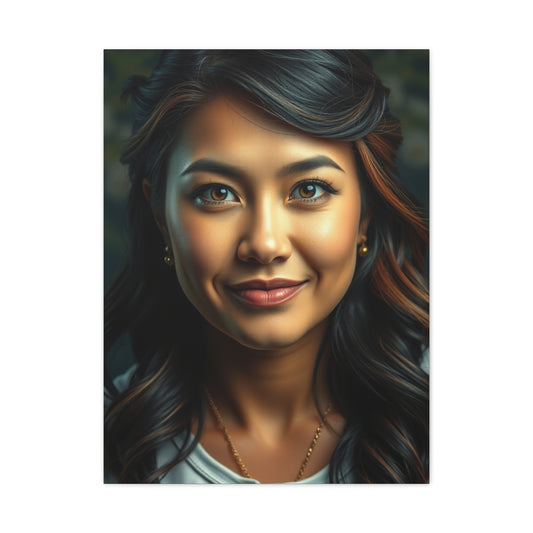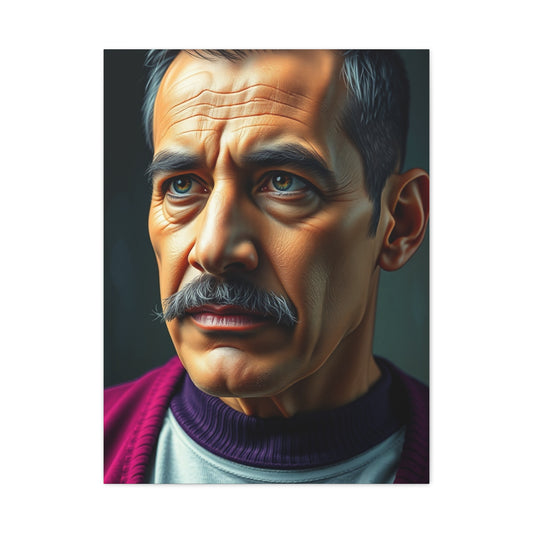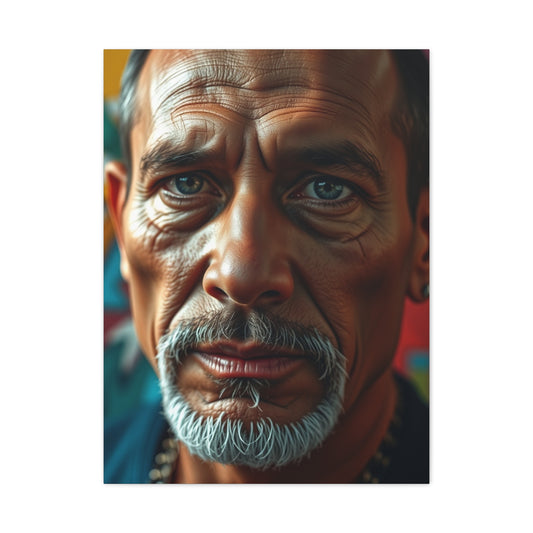Elevate Your Interiors with Fran Rodriguez Modern Wall Art Collections
The realm of contemporary visual artistry has witnessed remarkable transformations throughout recent decades, with emerging talents continually reshaping traditional boundaries and expectations. Within this dynamic landscape, certain artistic voices stand out for their distinctive approach to color, composition, and emotional resonance, and among these, Fran Rodriguez has carved a unique niche. His modern wall art collections exemplify a sophisticated interplay of abstract forms, vivid palettes, and thought-provoking motifs, transforming ordinary walls into immersive experiences that captivate both residents and guests alike.
The exploration of modern wall décor has evolved far beyond simple decorative intent. Today, it represents a carefully curated expression of personal identity and cultural sensibility. Fran Rodriguez’s work, for example, blends bold contemporary aesthetics with nuanced storytelling, inviting viewers to engage with the artwork on both an emotional and intellectual level. Each piece embodies a narrative, whether through abstract shapes that evoke movement and energy, or through deliberate color juxtapositions that stimulate contemplation and mood enhancement. In this sense, modern wall art transcends ornamentation, becoming a medium through which individuals can articulate their values, inspirations, and creative sensibilities.
Contemporary artistic expressions manifest through various mediums, each offering unique possibilities for creators and collectors alike. From large-scale canvases to limited edition prints, the accessibility of modern wall art has been greatly enhanced by advancements in printmaking and digital reproduction technologies. High-quality reproductions now allow collectors to experience the essence of original works without the constraints of exclusivity or cost. This democratization has sparked a renaissance in home decoration, enabling individuals to curate personalized environments that resonate with their aesthetic preferences and lifestyle aspirations. With Fran Rodriguez’s collections, homeowners can seamlessly integrate art into living rooms, offices, or public spaces, creating environments that feel both dynamic and harmonious.
The significance of wall-mounted artistic displays extends far beyond mere visual appeal. Carefully selected pieces act as conversation starters, emotional anchors, and sources of daily inspiration. Research consistently shows that exposure to aesthetically stimulating environments can reduce stress, boost creativity, and enhance cognitive function. Modern art, such as that of Fran Rodriguez, leverages this psychological impact, offering viewers moments of reflection and emotional engagement. Whether it is the contemplative serenity of a minimalist composition or the energetic vibrancy of a complex abstract piece, each artwork contributes to a thoughtfully designed space that nurtures both well-being and imagination.
Ultimately, Fran Rodriguez’s modern wall art collections offer more than decoration—they provide an opportunity to elevate interiors into immersive, expressive environments. By incorporating these works into your living or working spaces, you not only enhance visual appeal but also cultivate a space that reflects your personality, stimulates creativity, and resonates with contemporary artistic sensibilities.
Revolutionary Impact of Rodriguez Wall Prints
Rodriguez Wall Prints have emerged as transformative elements in contemporary interior design, offering homeowners and decorators unprecedented opportunities to infuse spaces with sophisticated artistic energy. These meticulously crafted reproductions capture the essence of original compositions while providing practical solutions for diverse decorating challenges. The versatility of these prints allows for seamless integration into various architectural styles and personal preferences.
The manufacturing process behind high-quality wall prints involves advanced printing technologies that ensure color accuracy, durability, and visual impact. Professional-grade equipment utilizes specialized inks and papers designed to withstand environmental factors while maintaining vibrancy over extended periods. This technological sophistication enables art enthusiasts to enjoy museum-quality reproductions within residential and commercial settings.
Interior designers increasingly recognize the strategic importance of wall-mounted artworks in creating cohesive spatial narratives. Rodriguez Wall Prints offer exceptional flexibility in this regard, as their diverse stylistic range accommodates both minimalist and maximalist approaches. The careful selection and placement of these prints can dramatically alter room dynamics, creating focal points, enhancing natural lighting, and establishing emotional atmospheres.
The democratization of art through accessible printing technologies has revolutionized how individuals engage with visual culture. No longer confined to exclusive galleries or prohibitively expensive originals, art appreciation has become an integral component of everyday living. This shift has empowered people to express their aesthetic sensibilities and create personalized environments that reflect their values and aspirations.
Fran Rodriguez Canvas Artworks
Fran Rodriguez Canvas creations represent a sophisticated fusion of traditional artistic techniques with contemporary sensibilities. The canvas medium provides artists with exceptional versatility, allowing for dynamic textural variations, bold color applications, and intricate compositional developments. This time-honored surface continues to inspire creative innovation while maintaining its historical significance within artistic traditions.
Canvas-based artworks offer unique advantages in terms of visual impact and longevity. The woven fabric structure creates subtle textural variations that enhance color depth and visual interest. Professional-grade canvases, when properly prepared and maintained, can preserve artistic expressions for generations, making them valuable investments for collectors and enthusiasts alike.
The process of creating canvas artworks involves multiple stages of preparation, execution, and finishing. Artists must consider substrate quality, primer application, paint selection, and protective treatments to ensure optimal results. These technical considerations significantly influence the final artwork's appearance, durability, and market value.
Contemporary canvas artists often experiment with mixed media approaches, incorporating unconventional materials and techniques to achieve distinctive visual effects. This experimental attitude has expanded the possibilities for artistic expression while challenging traditional categorizations and expectations. The resulting works frequently blur boundaries between painting, collage, and installation art.
The market for canvas artworks has evolved considerably with changing consumer preferences and technological advances. Digital reproduction techniques now enable high-fidelity canvas prints that capture original artworks' essence while offering affordability and accessibility. This development has broadened the audience for canvas art while creating new opportunities for artists and publishers.
Modern Rodriguez Wall Décor
Modern Rodriguez Wall Décor exemplifies the evolution of contemporary design philosophy, where artistic expression merges seamlessly with functional aesthetics. These carefully curated pieces reflect current trends while maintaining timeless appeal, ensuring long-term relevance within evolving interior design landscapes. The sophistication of modern wall décor lies in its ability to enhance architectural features while establishing emotional connections with inhabitants.
The selection process for modern wall décor requires careful consideration of multiple factors, including color schemes, proportional relationships, lighting conditions, and overall design objectives. Professional decorators emphasize the importance of creating visual harmony between artworks and surrounding elements, avoiding jarring contrasts that might disrupt spatial flow. This approach requires sophisticated understanding of design principles and aesthetic theory.
Contemporary wall décor trends increasingly favor clean lines, geometric compositions, and subtle color palettes that complement modern architectural styles. However, successful decorating often involves strategic contrasts that create visual interest without overwhelming spaces. The art lies in achieving balance between cohesion and dynamism, creating environments that feel both harmonious and engaging.
The psychological impact of well-chosen wall décor extends beyond immediate visual pleasure, influencing mood, productivity, and social interactions within spaces. Research in environmental psychology demonstrates that carefully selected artistic elements can reduce stress, enhance creativity, and improve overall quality of life. This understanding has elevated wall décor from optional embellishment to essential component of thoughtful interior design.
Technological advances have expanded possibilities for modern wall décor, with digital printing enabling previously impossible color accuracy and detail reproduction. These developments have democratized access to high-quality artistic reproductions while maintaining professional standards that satisfy discerning collectors and decorators.
Artistic Fran Rodriguez Prints:
Artistic Fran Rodriguez Prints represent a sophisticated synthesis of classical printmaking traditions with cutting-edge contemporary aesthetics. The printmaking process itself carries rich historical significance, tracing back centuries to early woodblock and engraving techniques that democratized artistic distribution. Modern interpretations of these traditional methods continue to honor historical precedents while embracing technological innovations.
The creation of high-quality artistic prints involves complex technical considerations that significantly impact final results. Paper selection, ink formulation, printing pressure, and environmental conditions all contribute to the distinctive characteristics that define exceptional prints. Master printmakers develop intuitive understanding of these variables through years of experimentation and refinement.
Limited edition prints hold special significance within art markets, offering collectors opportunities to acquire works that balance exclusivity with accessibility. The numbering and authentication processes associated with limited editions create investment potential while maintaining artistic integrity. Collectors often develop expertise in evaluating print quality, edition sizes, and artist signatures to make informed purchasing decisions.
Contemporary printmaking has expanded beyond traditional techniques to incorporate digital technologies that enable previously impossible precision and color range. Giclée printing, in particular, has revolutionized fine art reproduction by achieving museum-quality results that rival original artworks in terms of visual impact and longevity.
The appreciation of artistic prints requires understanding of the subtle qualities that distinguish exceptional works from mass-produced reproductions. Factors such as paper weight, ink saturation, color accuracy, and printing registration all contribute to overall quality assessments. Educated collectors develop sensitivity to these technical aspects while maintaining focus on aesthetic and emotional resonance.
Contemporary Rodriguez Canvas:
Contemporary Rodriguez Canvas works exemplify the dynamic evolution occurring within modern artistic circles, where traditional mediums undergo continuous reinterpretation through innovative approaches and fresh perspectives. The canvas medium, despite its historical associations, remains remarkably adaptable to contemporary artistic explorations, offering artists unlimited possibilities for creative expression.
The preparation of contemporary canvases involves sophisticated understanding of materials science, as modern artists often work with synthetic fibers, alternative primers, and experimental coating systems. These technical innovations enable new textural effects, color interactions, and durability characteristics that expand creative possibilities while maintaining professional standards.
Contemporary canvas artists frequently incorporate mixed media elements, creating layered compositions that challenge traditional painting conventions. The integration of collage materials, digital elements, photographic transfers, and three-dimensional components transforms canvas surfaces into complex visual narratives that engage viewers on multiple levels.
The market reception of contemporary canvas works reflects broader cultural shifts toward diverse artistic expressions and experimental approaches. Collectors increasingly value innovative techniques and conceptual depth alongside traditional technical mastery, creating opportunities for artists who push boundaries while maintaining visual appeal.
Gallery representation and exhibition opportunities for contemporary canvas artists have expanded through digital platforms and alternative exhibition spaces. This democratization of exposure enables emerging talents to reach audiences without traditional gatekeeping mechanisms, fostering diversity and innovation within artistic communities.
The Expansive Fran Rodriguez Collection
The Fran Rodriguez Collection represents a comprehensive exploration of artistic themes, techniques, and visual narratives that span multiple creative periods and stylistic approaches. Collections of this scope provide unique insights into artistic development, revealing evolutionary processes that shape creative voices over time. The curation of such extensive bodies of work requires sophisticated understanding of artistic progression and thematic coherence.
Art collections serve multiple functions within cultural ecosystems, preserving artistic heritage while providing educational resources for future generations. The documentation and preservation of complete collections involves complex logistical considerations, including cataloguing, conservation, insurance, and exhibition planning. Professional collection management ensures long-term accessibility and educational value.
The study of comprehensive artistic collections reveals patterns of influence, inspiration, and development that illuminate broader cultural movements and individual creative processes. Scholars often discover previously unrecognized connections between works, identifying thematic threads and stylistic evolution that enhance understanding of artistic significance.
Market valuation of artistic collections involves sophisticated analysis of individual work quality, historical significance, market demand, and comparative sales data. Professional appraisers consider multiple factors when assessing collection value, including provenance, condition, exhibition history, and critical reception.
The digital documentation of artistic collections has revolutionized accessibility and scholarly research, enabling global audiences to explore comprehensive bodies of work through high-resolution imaging and detailed cataloguing information. These technological advances have democratized art historical research while preserving fragile original works from excessive handling.
Unique Rodriguez Wall Art
Unique Rodriguez Wall Art encompasses a diverse range of creative expressions that challenge conventional categorizations while maintaining exceptional aesthetic standards. The concept of uniqueness in artistic production involves multiple factors, including technical innovation, conceptual originality, and visual distinctiveness. These qualities combine to create works that stand apart from mass-produced alternatives while offering lasting value to collectors and enthusiasts.
The creation of truly unique wall art requires artists to develop personal visual languages that reflect individual perspectives and experiences. This process often involves years of experimentation, refinement, and artistic risk-taking that gradually yields distinctive styles and approaches. The most successful unique artworks achieve balance between personal expression and universal appeal.
Authentication of unique artworks involves complex verification processes that examine technical execution, materials, provenance, and stylistic consistency. Professional authenticators develop expertise in recognizing distinctive characteristics that identify genuine works while detecting potential forgeries or misattributions. This specialized knowledge protects collectors while maintaining market integrity.
The display of unique wall art requires careful consideration of environmental factors that might affect long-term preservation. Factors such as lighting exposure, humidity levels, temperature fluctuations, and air quality all influence artwork longevity. Professional conservation practices ensure that unique works remain accessible for future generations while maintaining their original visual impact.
Investment potential in unique wall art depends on multiple market factors, including artist reputation, work quality, rarity, and collector demand. Successful art investors develop expertise in identifying emerging talents and undervalued works while understanding market dynamics that influence pricing trends over time.
Vibrant Fran Rodriguez Canvas
Vibrant Fran Rodriguez Canvas works exemplify the transformative power of bold color applications and dynamic compositional structures in contemporary artistic expression. The achievement of genuine vibrancy requires sophisticated understanding of color theory, pigment properties, and visual perception principles that enable artists to create works with exceptional energy and emotional impact.
Color vibrancy in canvas works depends on multiple technical factors, including pigment quality, binder formulation, surface preparation, and application techniques. Professional-grade materials and proper execution methods ensure that vibrant colors maintain their intensity over time while resisting fading, chalking, or other degradation processes that might diminish visual impact.
The psychology of vibrant colors influences viewer responses in measurable ways, with certain hues triggering specific emotional and physiological reactions. Artists who master these principles can create works that generate desired responses while maintaining aesthetic sophistication. This understanding elevates decorative art to the level of environmental design that actively shapes human experience.
Compositional strategies for vibrant artworks require careful balance between energetic color applications and structural harmony. Successful vibrant works avoid visual chaos through strategic use of focal points, rhythmic patterns, and transitional elements that guide viewer attention while maintaining overall coherence.
The display of vibrant canvas works requires consideration of surrounding environmental factors that might enhance or detract from color impact. Lighting selection, wall colors, furniture choices, and spatial proportions all influence how vibrant artworks appear within interior settings. Professional installation advice ensures optimal presentation of these dynamic works.
Rodriguez-Inspired Wall Décor
Rodriguez-Inspired Wall Décor represents a fascinating phenomenon where artistic influence transcends individual creation to inspire broader decorative movements and stylistic interpretations. This cultural diffusion demonstrates the power of distinctive artistic voices to shape aesthetic preferences and influence design trends across multiple creative disciplines.
The process of artistic inspiration involves complex psychological and cultural mechanisms that transform individual creative expressions into shared visual languages. When particular artists achieve significant cultural influence, their stylistic approaches often inspire derivative works, adaptations, and interpretations that extend original concepts into new contexts and applications.
Contemporary wall décor markets frequently feature collections inspired by influential artists, offering consumers opportunities to incorporate recognizable aesthetic elements into their personal spaces. These inspired works maintain connection to original sources while adapting to practical requirements of mass production and consumer preferences.
The ethical considerations surrounding artist-inspired décor involve questions of intellectual property, creative attribution, and fair compensation. Professional manufacturers typically navigate these issues through licensing agreements, collaboration partnerships, or clear distinction between inspiration and direct copying.
Educational value emerges from inspired décor collections that introduce broader audiences to influential artistic movements and individual creators. These accessible interpretations often serve as entry points for deeper art appreciation while supporting continued interest in original works and comprehensive artistic exploration.
Stylish Fran Rodriguez Prints
Stylish Fran Rodriguez Prints embody the intersection of artistic excellence and refined aesthetic sensibility, creating works that enhance sophisticated interior environments while maintaining broad appeal. The concept of style in artistic prints encompasses multiple dimensions, including compositional elegance, color sophistication, technical execution, and cultural relevance.
The development of stylish artistic prints requires understanding of contemporary design trends while maintaining timeless qualities that ensure long-term relevance. This balance challenges artists to create works that feel current without becoming dated, achieving sophistication that transcends temporary fashion cycles.
Professional interior designers increasingly recognize the importance of stylish prints in creating cohesive design schemes that reflect client preferences and lifestyle requirements. The selection process involves careful analysis of existing décor elements, architectural features, and functional requirements to identify prints that enhance overall aesthetic objectives.
Market demand for stylish prints reflects broader cultural appreciation for design sophistication and artistic quality in everyday environments. Consumers increasingly seek decorative elements that demonstrate refined taste while providing lasting satisfaction and investment value.
The production of genuinely stylish prints requires investment in high-quality materials, advanced printing technologies, and professional finishing techniques. These quality standards ensure that final products meet expectations of discerning consumers while maintaining competitive market positioning.
Fran Rodriguez Creative Canvas: Innovation and Artistic Exploration
Fran Rodriguez Creative Canvas works represent the cutting edge of contemporary artistic exploration, where traditional canvas painting techniques merge with innovative approaches to create groundbreaking visual experiences. Creative canvas art pushes beyond conventional boundaries, incorporating experimental materials, unconventional techniques, and interdisciplinary influences.
The creative process in contemporary canvas art often involves extensive experimentation with new materials, techniques, and conceptual approaches. Artists working in this mode frequently develop proprietary methods that distinguish their work from traditional approaches while maintaining technical excellence and visual appeal.
Innovation in canvas art emerges from willingness to challenge established conventions while respecting fundamental principles of visual composition and technical execution. The most successful creative works achieve balance between experimental boldness and aesthetic sophistication that appeals to both critics and collectors.
Documentation of creative processes has become increasingly important as artists develop complex techniques that require preservation for future study and replication. Video documentation, written descriptions, and photographic records help maintain knowledge of innovative approaches while supporting educational and scholarly research.
The market reception of creative canvas works often depends on successful communication of artistic concepts and technical innovations to potential collectors and critics. Artists must develop skills in articulating their creative approaches while demonstrating the value and significance of their innovations.
Bold Rodriguez Wall Art
Bold Rodriguez Wall Art demonstrates the capacity of visual art to make powerful statements that command attention and provoke meaningful responses. Bold artistic expression requires confidence, technical mastery, and clear vision that enables artists to create works with unmistakable presence and emotional impact.
The achievement of genuine boldness in wall art involves strategic use of scale, color, composition, and subject matter to create works that stand apart from conventional decorative elements. Bold art often challenges viewer expectations while maintaining aesthetic appeal and technical excellence.
Psychological research demonstrates that bold visual elements can significantly influence mood, energy levels, and social dynamics within interior spaces. Understanding these effects enables artists and decorators to use bold artworks strategically to achieve specific environmental objectives.
The placement and display of bold wall art requires careful consideration of spatial relationships, lighting conditions, and surrounding design elements. Professional installation often involves custom mounting, specialized lighting, and environmental controls that optimize presentation while protecting artwork integrity.
Market demand for bold wall art reflects cultural appreciation for confident artistic expression and distinctive interior design. Collectors of bold works often seek pieces that make strong personal statements while demonstrating sophisticated aesthetic judgment and investment acumen.
Fran Rodriguez Poster Collection: Accessible Art for Every Space
The Fran Rodriguez Poster Collection represents democratized access to high-quality artistic reproductions that bring sophisticated visual experiences to diverse audiences and environments. Poster collections serve important cultural functions by making art accessible while maintaining quality standards that preserve artistic integrity and visual impact.
The production of professional-quality art posters involves sophisticated printing technologies that achieve color accuracy, detail resolution, and durability standards appropriate for long-term display. Modern digital printing capabilities enable poster production that rivals traditional fine art printing while maintaining cost-effectiveness for broader distribution.
Poster collections offer unique opportunities for art education and cultural exposure, enabling schools, libraries, and community organizations to display high-quality artistic reproductions that might otherwise be inaccessible. This educational function supports broader cultural literacy and artistic appreciation within diverse communities.
The curation of comprehensive poster collections requires careful selection processes that balance artistic quality, educational value, and market appeal. Successful collections often feature works that span multiple stylistic periods and thematic approaches while maintaining coherent aesthetic standards.
Contemporary poster markets increasingly recognize the collectible value of limited edition and artist-authorized reproductions. These higher-end poster products bridge traditional poster accessibility with fine art investment potential, creating new market categories that serve diverse consumer preferences.
Elegant Rodriguez Canvas: Refinement in Artistic Expression
Elegant Rodriguez Canvas works exemplify refined artistic sensibility that prioritizes sophistication, subtlety, and timeless appeal over trendy or dramatic effects. Elegance in canvas art emerges from masterful control of compositional elements, color relationships, and technical execution that creates works of lasting beauty and cultural significance.
The achievement of genuine elegance requires deep understanding of classical artistic principles combined with contemporary sensibilities that keep works relevant to modern audiences. This synthesis challenges artists to honor traditional standards while incorporating fresh perspectives and innovative approaches.
Interior design applications for elegant canvas works often focus on creating sophisticated environments that support formal entertaining, professional activities, or contemplative experiences. The selection and placement of elegant artworks requires consideration of architectural features, lighting conditions, and functional requirements.
Investment potential for elegant canvas works often exceeds that of more experimental or trendy alternatives, as refined aesthetic qualities tend to maintain appeal across changing market conditions. Collectors frequently view elegant works as stable investments that provide both aesthetic satisfaction and financial security.
The conservation of elegant canvas works requires specialized knowledge of materials and techniques that preserve subtle visual qualities while maintaining structural integrity. Professional conservation services ensure that these refined works continue to provide aesthetic pleasure for future generations.
Contemporary Interior Design Integration Through Artistic Expression
The integration of contemporary artistic expressions into modern interior design represents a sophisticated synthesis of aesthetic theory, practical functionality, and personal expression. This complex process requires understanding of spatial relationships, color theory, lighting design, and human psychology to create environments that support both aesthetic appreciation and daily living requirements.Professional interior designers increasingly recognize the strategic importance of art selection in creating cohesive design narratives that reflect client personalities while addressing functional needs. The process involves careful analysis of architectural features, furniture selections, lighting systems, and lifestyle patterns to identify artistic elements that enhance overall design objectives.
Color coordination between artworks and interior elements requires sophisticated understanding of color theory, including concepts of harmony, contrast, temperature, and psychological impact. Successful integration often involves custom color matching, strategic accent placement, and careful consideration of changing light conditions throughout daily and seasonal cycles.Scale relationships between artworks and architectural features significantly influence visual impact and spatial perception within interior environments. Professional installation often requires custom mounting systems, specialized lighting, and precise positioning to achieve optimal presentation while maintaining safety and conservation standards.
The evolution of smart home technologies has created new possibilities for dynamic art display systems that can adapt to changing conditions, preferences, and occasions. These technological innovations enable more flexible and responsive integration of artistic elements into contemporary living environments.The cultural significance of contemporary artistic expression extends beyond immediate aesthetic pleasure to encompass broader questions of cultural identity, social commentary, and historical documentation. Artists working within contemporary frameworks often serve as cultural interpreters who reflect and influence social attitudes while contributing to ongoing cultural evolution.
Artistic legacy development involves complex processes of critical recognition, market validation, and cultural integration that determine long-term significance and influence. The most enduring artistic contributions often combine technical excellence with innovative vision and cultural relevance that transcends temporary trends or market fluctuations.Educational institutions play crucial roles in preserving and transmitting artistic legacies through curriculum development, collection building, and scholarly research. These academic functions ensure that significant artistic contributions receive appropriate recognition while supporting continued innovation and cultural development.
The documentation and preservation of contemporary artistic movements requires sophisticated approaches that capture not only finished works but also creative processes, cultural contexts, and evolutionary developments. Digital technologies have revolutionized these preservation efforts while creating new challenges related to format stability and access maintenance.International cultural exchange increasingly influences contemporary artistic development, with global communication networks enabling unprecedented cross-cultural collaboration and influence. These international connections enrich local artistic traditions while contributing to emerging global aesthetic languages that transcend traditional cultural boundaries.
Art Production and Presentation
Technical excellence in contemporary art production encompasses multiple dimensions, including material mastery, execution precision, innovation capability, and presentation sophistication. The achievement of professional standards requires extensive training, ongoing experimentation, and commitment to quality that distinguishes serious artistic endeavors from amateur attempts.
Material science advances continue to expand possibilities for artistic expression while creating new challenges related to longevity, compatibility, and environmental impact. Contemporary artists must balance innovative material exploration with proven conservation principles to ensure long-term work stability and presentation quality.
Production techniques for contemporary art increasingly incorporate digital technologies that enable precision and repeatability previously impossible through traditional methods alone. However, the most successful contemporary works often combine digital capabilities with traditional craftsmanship to achieve unique aesthetic effects and authentic artistic expression.
Quality control in art production involves systematic evaluation of multiple factors, including color accuracy, structural integrity, surface quality, and overall aesthetic impact. Professional standards require consistent attention to detail throughout production processes while maintaining creative spontaneity and artistic authenticity.
Presentation technologies for contemporary art continue to evolve, with advances in lighting design, climate control, security systems, and display hardware enabling optimal viewing conditions while protecting valuable works from environmental damage or security threats.
Considerations in Contemporary Art
Contemporary art markets operate according to complex dynamics that involve artistic quality, cultural significance, market trends, and economic conditions. Understanding these factors enables collectors, investors, and enthusiasts to make informed decisions while supporting continued artistic development and cultural enrichment.
Price determination in art markets reflects multiple variables, including artist reputation, work rarity, condition quality, provenance documentation, and current demand levels. Professional appraisal services provide expert analysis of these factors while considering comparable sales data and market trend projections.
Investment strategies for contemporary art require long-term perspectives that balance aesthetic appreciation with financial objectives. Successful art investors often develop specialized knowledge in particular artistic movements, mediums, or geographic regions while maintaining diversified portfolio approaches that minimize risk exposure.
Authentication and provenance verification play crucial roles in maintaining market integrity while protecting collectors from fraudulent or misattributed works. Professional authentication services employ sophisticated analysis techniques, including scientific testing, stylistic analysis, and historical documentation review.
Emerging market trends in contemporary art reflect broader cultural shifts, technological advances, and generational preferences that influence collector behavior and artistic development. Understanding these trends enables market participants to identify opportunities while avoiding speculative bubbles or temporary fashion cycles.
Conservation and Preservation of Contemporary Artistic Works
Conservation and preservation of contemporary artistic works present unique challenges that require specialized knowledge of modern materials, techniques, and environmental factors. Unlike traditional artworks created with time-tested materials, contemporary works often incorporate experimental substances that require innovative preservation approaches.
Environmental control systems for art preservation must address multiple factors, including temperature stability, humidity regulation, air quality management, and light exposure limitation. Professional conservation facilities employ sophisticated monitoring and control systems that maintain optimal conditions while providing security and access for research and display purposes.
Preventive conservation strategies emphasize environmental control and handling protocols that minimize damage risk while maximizing artwork longevity. These approaches prove more cost-effective than remedial treatments while preserving original artistic intent and material integrity.
Documentation standards for contemporary art conservation require comprehensive records that capture original conditions, treatment histories, and ongoing monitoring data. Digital documentation systems enable precise record-keeping while supporting research and educational activities that benefit broader conservation communities.
Professional conservation training for contemporary art requires interdisciplinary education that combines traditional art historical knowledge with materials science, chemistry, and advanced analytical techniques. This specialized expertise ensures appropriate treatment approaches while advancing conservation knowledge and capabilities.
Contemporary Artistic Development
Future directions in contemporary artistic development reflect convergences of technological innovation, cultural evolution, and environmental awareness that will likely reshape artistic practices and cultural functions. Understanding these emerging trends enables artists, collectors, and cultural institutions to prepare for upcoming opportunities and challenges.
Technological integration in artistic practice continues to accelerate, with developments in artificial intelligence, virtual reality, and biotechnology creating unprecedented possibilities for creative expression. However, these technological capabilities must be balanced with human artistic sensibilities and cultural values to maintain meaningful cultural relevance.
Sustainability considerations increasingly influence artistic material selection, production methods, and distribution strategies as environmental awareness shapes cultural priorities. Artists and institutions are developing innovative approaches to reduce environmental impact while maintaining quality standards and cultural accessibility.
Global connectivity continues to foster international artistic collaboration and cultural exchange that enriches local traditions while contributing to emerging global aesthetic languages. These international connections create opportunities for cross-cultural learning while challenging artists to develop universal appeal without sacrificing cultural authenticity.
Demographic shifts in artistic audiences and collectors reflect broader social changes that will influence market dynamics, institutional priorities, and artistic content development. Understanding these demographic trends enables cultural institutions and artists to adapt their approaches while maintaining relevance and support.
Conclusion:
The exploration of contemporary artistic expression, particularly through the lens of exceptional creators and their diverse bodies of work, reveals the profound impact that thoughtful visual art continues to have on individual lives and broader cultural development. The journey through various aspects of modern artistic production, from traditional canvas works to innovative wall décor solutions, demonstrates the remarkable versatility and continuing relevance of visual art in contemporary society.
The democratization of art through advanced reproduction technologies has fundamentally transformed how people interact with artistic expression, making high-quality visual experiences accessible to diverse audiences while maintaining respect for original artistic vision and cultural significance. This accessibility has fostered a renaissance in personal aesthetic expression, where individuals can curate living environments that reflect their values, aspirations, and cultural sensibilities.
Contemporary wall art serves functions far beyond simple decoration, acting as catalyst for emotional expression, conversation starter, and reflection of personal identity. The psychological benefits of surrounding oneself with meaningful visual stimuli have been consistently demonstrated through research, confirming the value of thoughtful art selection in creating supportive living and working environments.
The technical excellence achieved in modern art production and reproduction ensures that contemporary works can provide lasting satisfaction and investment value while maintaining cultural and aesthetic significance over extended periods. Professional standards in materials, execution, and presentation protect both artistic integrity and collector interests while supporting continued innovation and cultural development.
The market dynamics surrounding contemporary art reflect broader cultural values and economic trends while providing opportunities for both aesthetic appreciation and financial investment. Understanding these market forces enables informed decision-making while supporting continued artistic development and cultural enrichment through patronage and collection building.
Conservation and preservation efforts for contemporary works require sophisticated understanding of modern materials and techniques while adapting traditional preservation principles to new challenges. These efforts ensure that significant contemporary artistic contributions will remain accessible for future generations while supporting ongoing research and educational activities.
The educational and cultural impact of contemporary art extends far beyond immediate aesthetic pleasure, contributing to cultural literacy, critical thinking development, and community building through shared aesthetic experiences. These broader cultural functions justify continued support for artistic development while demonstrating art's essential role in human cultural evolution.
Future developments in contemporary art will likely reflect ongoing technological innovation, environmental awareness, and global connectivity while maintaining fundamental human needs for beauty, meaning, and cultural expression. The most successful contemporary artistic expressions will balance innovation with tradition, global awareness with local authenticity, and technological capability with human sensibility.
The enduring value of contemporary artistic expression lies in its capacity to enrich human experience while documenting and interpreting cultural evolution. Through careful attention to quality, authenticity, and cultural significance, contemporary art continues to serve essential functions in individual development and community building while contributing to the ongoing human story of creative expression and cultural achievement.
The investment in contemporary art, whether through collection building, institutional support, or personal aesthetic development, represents commitment to cultural values that transcend immediate material considerations. This investment supports not only individual satisfaction and potential financial return but also broader cultural development that benefits society as a whole through enhanced aesthetic awareness and cultural sophistication.
As we continue to navigate rapidly changing technological and social landscapes, the stability and enrichment provided by thoughtful artistic expression becomes increasingly valuable. The works discussed throughout this exploration represent the kind of cultural resources that provide grounding, inspiration, and continuity while adapting to changing circumstances and emerging opportunities.
The appreciation and support of contemporary artistic expression ultimately reflects our collective commitment to cultural values that distinguish human civilization and contribute to individual fulfillment. Through continued engagement with high-quality artistic works, we participate in cultural evolution while enriching our personal lives and contributing to community development that extends far beyond immediate aesthetic pleasure.

